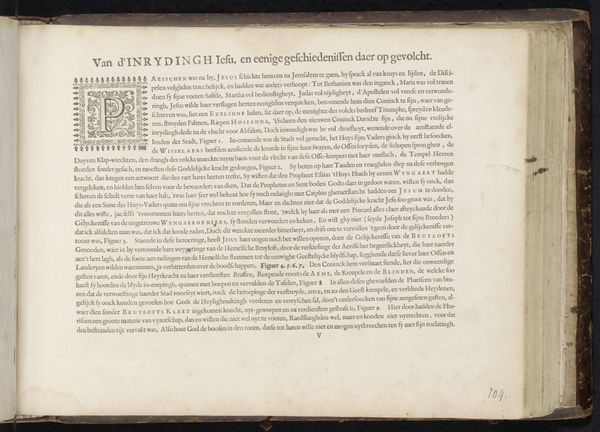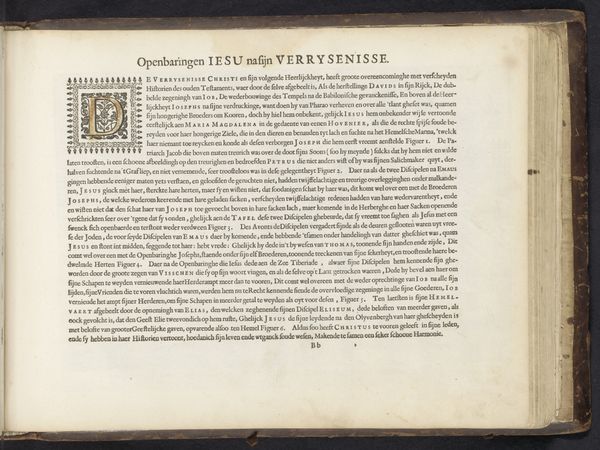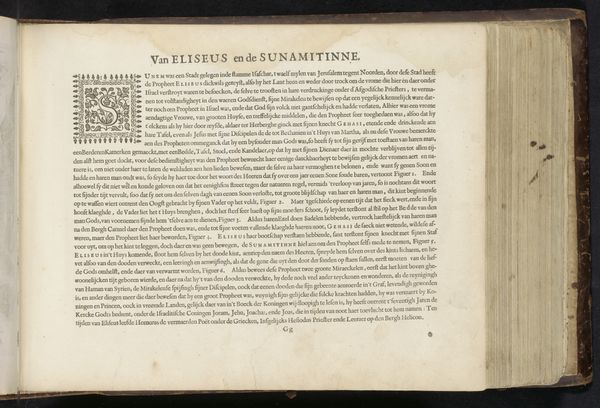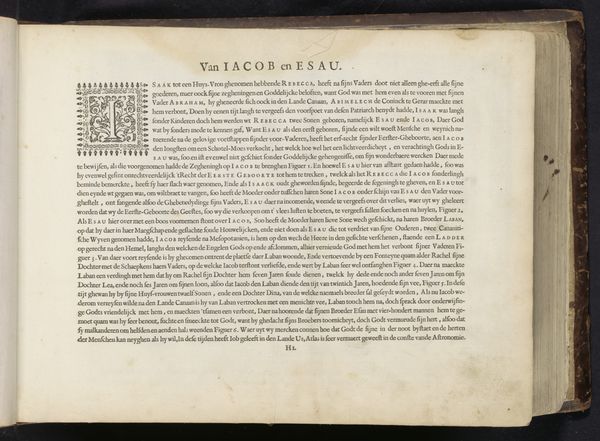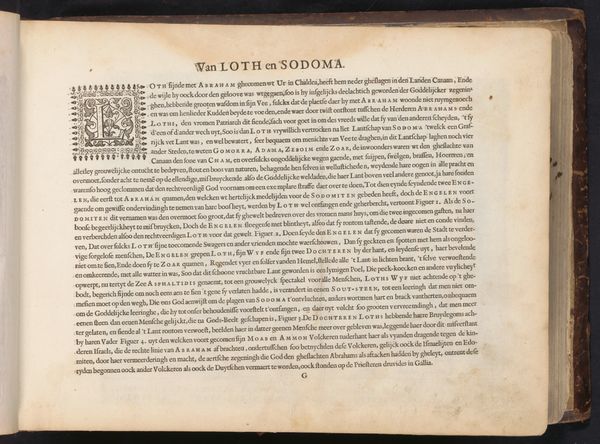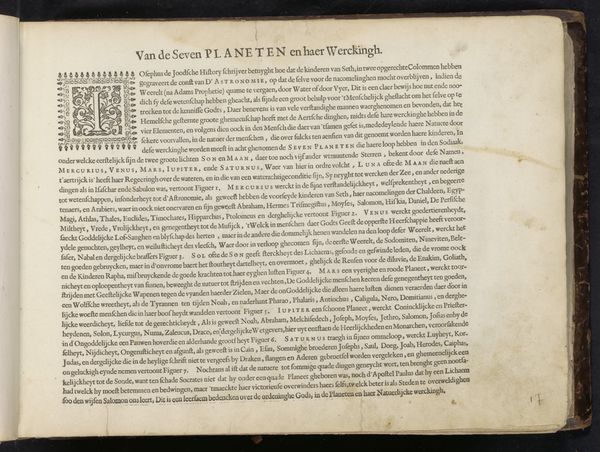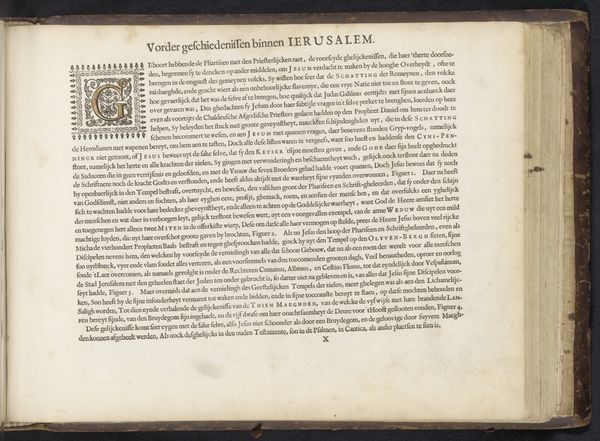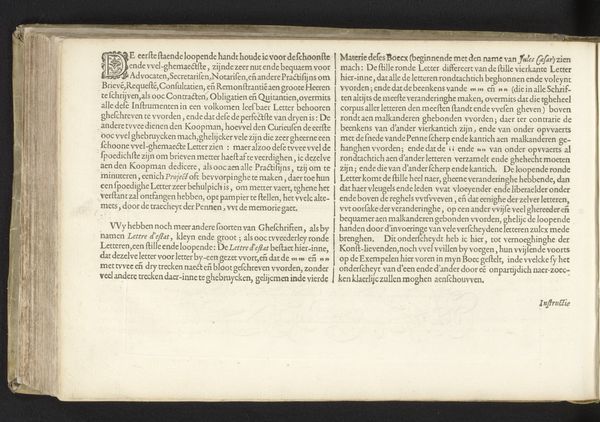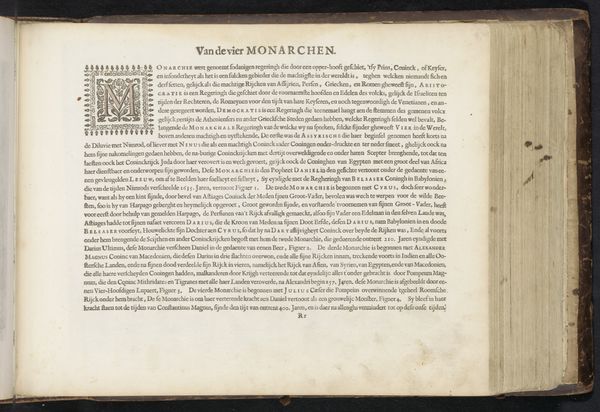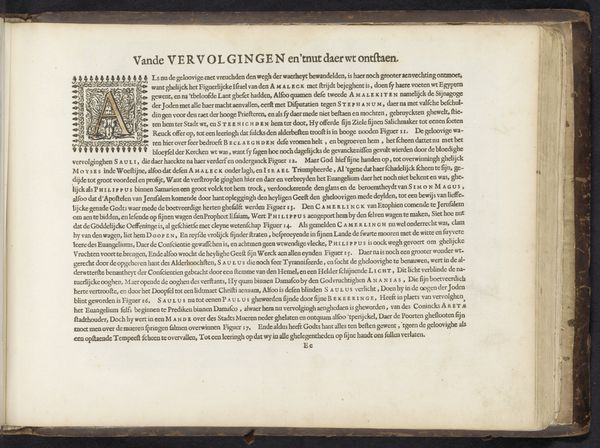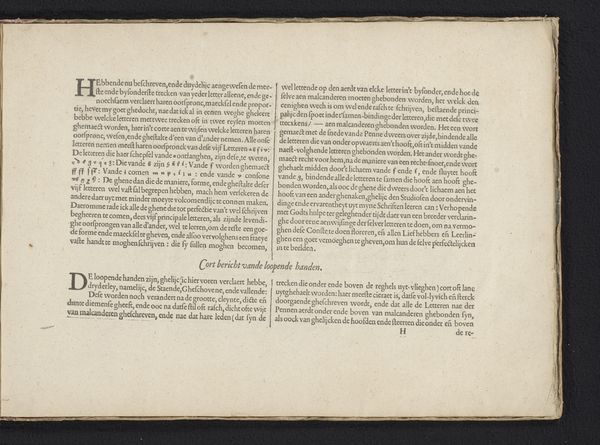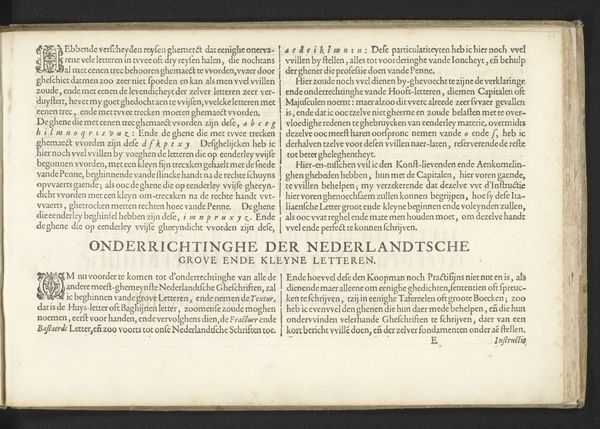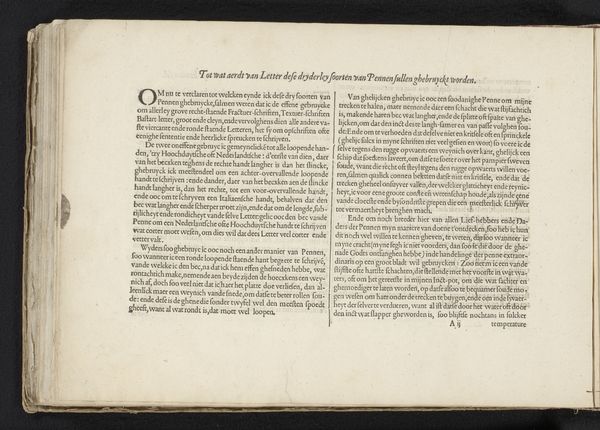
#
aged paper
#
toned paper
#
sketch book
#
personal sketchbook
#
journal
#
coloured pencil
#
ink colored
#
sketchbook art
#
watercolor
#
historical font
Dimensions: height 257 mm, width 340 mm
Copyright: Rijks Museum: Open Domain
Curator: Let’s delve into “Geschiedenissen opt Loover-Hutten Feest,” dating back to 1646, housed at the Rijksmuseum. The artist behind this piece is Jan Philipsz Schabaelje, and what we’re looking at is a page from his sketchbook rendered in ink and watercolor. Editor: Immediately striking! There’s an almost architectural quality to the tight lines of script; it makes the information seem monumental, fixed, despite being on, ostensibly, a casual journal page. It really emphasizes how language constructs its own reality. Curator: The textual density mirrors a prevailing aesthetic—the layering of allegorical and symbolic significance into everyday objects. Here we have religious scenes from the Feast of the Tabernacles intertwined within this historical font; they serve to emphasize a cultural memory of theological and national events. Editor: Exactly! And consider the context of 1646. This piece exists at the tail end of the Dutch Golden Age—a time of unprecedented prosperity but also stark political and religious upheaval. What do you see when looking at it through that prism? Does it feel like documentation or an argument? Curator: Both, perhaps intentionally. It’s like Schabaelje sought to affirm a sense of continuity in a world rocked by conflict. By invoking biblical stories and embedding them within detailed, almost legalistic text, there’s a claim of permanence and a connection to foundational narratives. Editor: The ink is so rich, but still feels somehow ephemeral—do you think he was also drawing parallels between those old Biblical stories and contemporary strife through the fragility of his chosen medium? The color could reflect hope. Curator: Indeed! And Schabaelje also hints at human struggles with power dynamics and spiritual questions that endure. Despite the physical degradation evident on the page, it echoes timeless debates around justice, belief, and leadership. Editor: Ultimately, this page illuminates a commitment to tradition even while grappling with the chaos and instability of an ever-changing world. It's almost like he tried to build an ark, carrying fragments of history across stormy seas of transformation. Curator: Well put, and seeing it today helps us chart those continuities ourselves. Understanding where we've been clarifies how to imagine where we can go. Editor: Exactly. Art becomes not just a relic, but a living witness. A complex ancestor that can remind us how our history has influenced modern social dynamics.
Comments
No comments
Be the first to comment and join the conversation on the ultimate creative platform.
